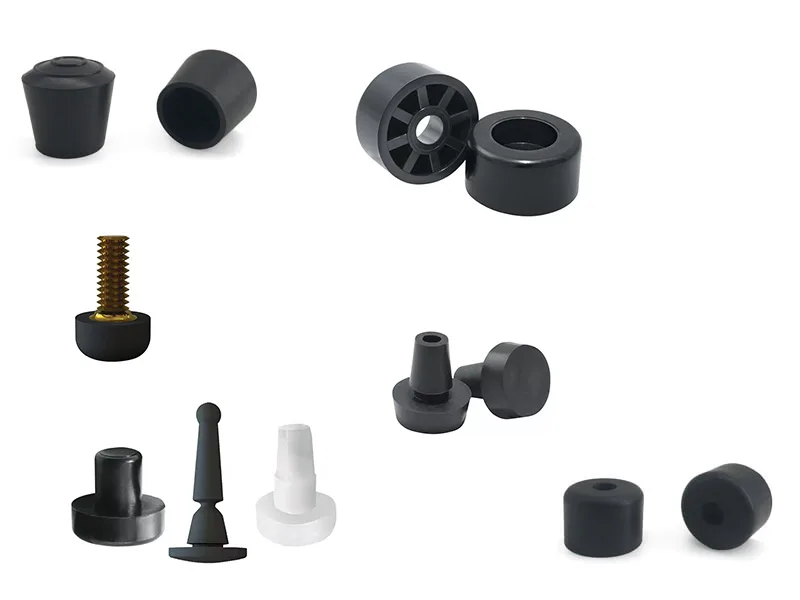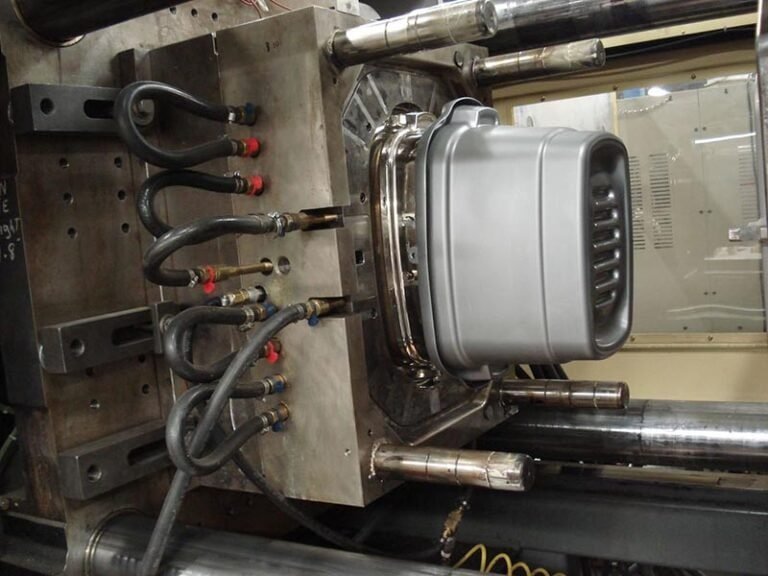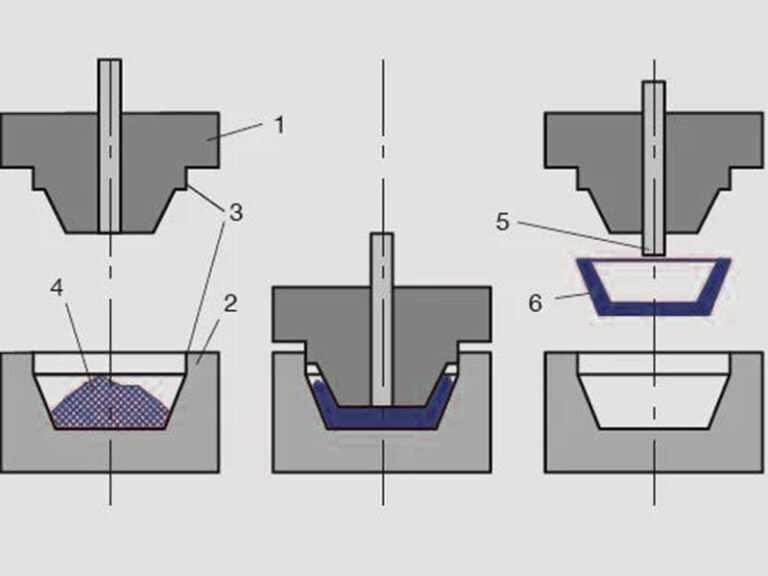From stability and protection to vibration dampening and moisture resistance, the rubber feet benefits are obvious and extensive. In this post, we will explore rubber feet and learn the benefits of rubber feet in various industries.
What is Rubber Feet?
Rubber feet, commonly referred to as rubber bumpers or rubber bumper feet, are small rubber components attached to the bottom of objects or equipment. The rubber feet are typically made of durable, elastic rubber material and come in various shapes like round, oblong, or rectangular pads that can be attached to the base of furniture, appliances, machinery, or other objects. Their main purpose is to cushion, stabilize, and protect both the object and the surface it rests on.
The rubber feet provide the following benefits:
#1: Stability and Protection
Rubber feet serve a dual purpose of providing stability to objects while simultaneously protecting surfaces from damage. Let’s delve into each aspect:
Preventing Slipping and Sliding:
Rubber feet are designed with a high coefficient of friction, meaning they have a strong grip on surfaces. When affixed to the bottom of objects like furniture, electronics, or appliances, rubber feet create a stable foundation that prevents them from slipping or sliding on smooth surfaces such as wood, tile, or laminate flooring. This stability is particularly crucial in environments where safety is paramount, such as homes, offices, or industrial settings. Whether it’s keeping a chair firmly in place or ensuring a speaker doesn’t shift during use, rubber feet provide reliable support that enhances user experience and minimizes the risk of accidents.
Protecting Surfaces from Damage:
The cushioning properties of rubber feet act as a barrier between objects and surfaces, effectively protecting them from scratches, scuffs, and other damage caused by friction. When an object with rubber feet is moved or adjusted, the rubber absorbs the impact and distributes the pressure evenly, reducing the likelihood of surface damage. This is especially important for delicate materials like wood, glass, or polished metal, where even minor abrasions can detract from their appearance and longevity. By mitigating the effects of friction, rubber feet help preserve the integrity and aesthetics of surfaces, ensuring they remain in pristine condition over time.
#2: Vibration Dampening
Uubber feet are not just about stability and protection; they also excel in vibration dampening, offering significant benefits in various domains.
Rubber is known for its ability to absorb and dissipate vibrations effectively. When applied as feet to electronic devices, machinery, or household appliances, rubber feet act as shock absorbers, dampening the vibrations generated during operation. As these vibrations travel through the object, the rubber feet compress and deform slightly, absorbing the energy and reducing the impact felt by both the equipment and its surroundings. This damping effect is particularly valuable in scenarios where precise operation or sensitive components are involved, as it helps maintain stability and performance while minimizing wear and tear.
#3: Floor Protection
Rubber feet are not just about stability and noise reduction; they also play a crucial role in safeguarding floors from damage caused by heavy objects.
When heavy objects such as furniture, appliances, or equipment are placed directly on floors, they can leave undesirable marks, stains, or dents over time. Rubber feet act as protective buffers, distributing the weight of these objects evenly and reducing the pressure exerted on the floor’s surface. By cushioning the impact and minimizing friction, rubber feet effectively prevent damage, preserving the appearance and integrity of floors for longer periods.
#4: Moisture Resistance
Rubber feet offer more than just stability and floor protection; they also excel in resisting moisture, making them highly versatile for use in various environments.
Rubber, as a material, inherently exhibits resistance to moisture, making rubber feet ideal for use in damp or wet environments. Unlike other materials that may degrade or corrode when exposed to water or humidity, rubber maintains its structural integrity and performance, ensuring long-lasting durability even in challenging conditions. This moisture resistance makes rubber feet suitable for outdoor use, marine applications, and kitchen environments where exposure to water or liquids is common.
#5: Easy to Customization and Versatility
Rubber feet offer not only stability and protection but also unparalleled customization options, making them adaptable to diverse needs and applications.
Easy Customization for Various Shapes, Sizes, and Materials:
Rubber feet are available in a plethora of shapes, sizes, and materials, allowing users to choose the most suitable option for their specific requirements. Whether it’s round, square, cylindrical, or tapered, rubber feet come in diverse shapes to accommodate different objects and surfaces. Likewise, they are available in various sizes, from miniature to large, to accommodate objects of varying dimensions. Additionally, rubber feet are manufactured using different materials such as natural rubber, synthetic rubber, silicone, or neoprene, each offering specific properties like durability, flexibility, or temperature resistance. This extensive range of options ensures that users can find the perfect rubber feet to meet their exact needs and preferences.
Easy Customization for Specific Applications:
One of the most significant advantages of rubber feet is their ease of customization for specific applications. Rubber feet can be easily modified or tailored to suit unique requirements, whether it’s adjusting the height, altering the shape, or adding special features like adhesive backing or threaded inserts. This flexibility allows rubber feet to be seamlessly integrated into various products and equipment, enhancing their functionality and performance. Whether it’s customizing rubber feet for industrial machinery, household appliances, or specialized equipment, manufacturers can rely on rubber feet’s adaptability to meet specific design specifications and user preferences.

#6: Positive Environmental Impact
Rubber feet not only excel in functionality but also make a positive environmental impact, offering eco-friendly attributes that contribute to sustainability efforts:
Contribution to Sustainability Efforts:
Choosing rubber feet over alternative materials can significantly contribute to sustainability efforts in several ways. Firstly, rubber feet extend the lifespan of products and equipment by providing stability, protection, and functionality, reducing the need for premature replacements and conserving resources. Additionally, rubber feet’s recyclability and biodegradability ensure that they can be responsibly disposed of at the end of their lifecycle, minimizing environmental pollution and landfill waste. Moreover, the production of rubber feet often entails lower energy consumption and greenhouse gas emissions compared to manufacturing processes for alternative materials, further reducing their environmental footprint.
Conclusion
Rubber feet offer a range of benefits including stability, protection, and versatility. They prevent slipping, absorb vibrations, and safeguard floors from damage, making them ideal for various applications. With customization options and eco-friendly attributes, rubber feet are a sustainable choice.




